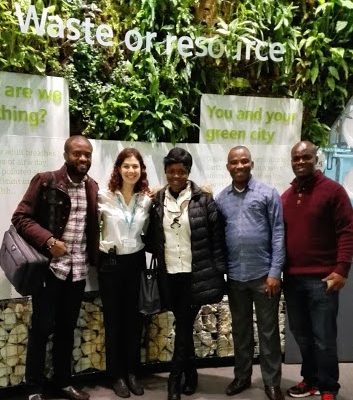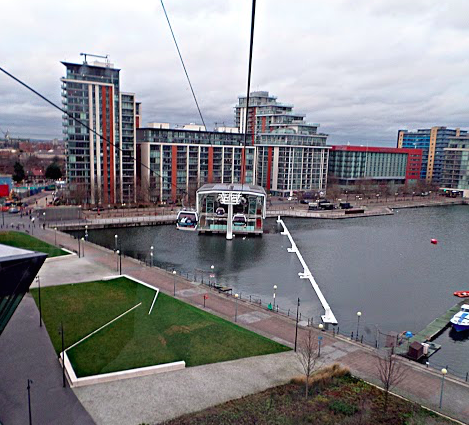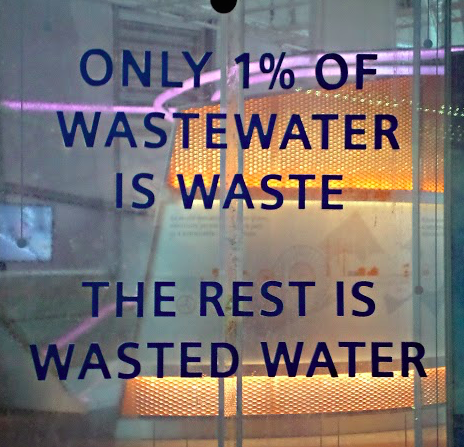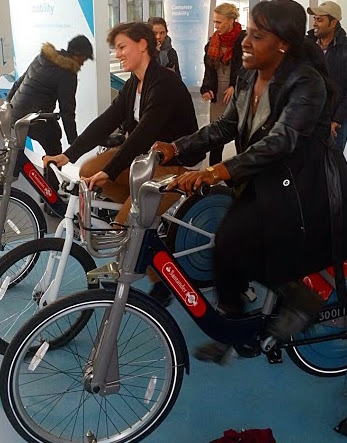On 16 December 2015, postgraduate students from the Purchasing and Supply Chain MSc programme visited the £30 million landmark Siemens Urban Sustainability Centre ‘The Crystal’ in the London Docklands. The visit was organised by Course Leader Rachel Lander as part of the Sustainable Supply and Procurement module.
The context: global urbanisation & sustainable development
A few days before the visit, representatives from almost 200 countries gathered at the UN Framework Convention on Climate Change (UNFCCC) Conference of the Parties (COP21) in Paris, France. One of the key topical problems that the conference addressed was the effect of increasing global urbanisation on sustainable development. Ultimately, there was an agreement to limit global temperature rise to 2 degrees Celsius. Countries have also committed themselves to Intended Nationally Determined Contributions (INDCs), a mechanism where each nation states their country’s ambition for reducing emissions. The top emitters, the US and China have formalised their commitment to cut emissions by 26-28% below 2005 base levels by 2025 and 20% by 2030 respectively. Siemens posits that currently, 50% of the world’s population live in urban areas and it is projected to rise to 70% by 2050. This presents a challenge in terms of sustainability, planning and development.

Arriving at The Crystal
The students were shown an introductory video to set the tone for the excursion. The video highlights a range of sustainability issues that occur in urban areas, which include an exponential growth in urban population, transportation and congestion, clean energy challenges, an ageing population, terrorism and the formulation and delivery of adequate and green infrastructure to meet the requirements of a rapidly expanding urban population. At the heart of these issues is the challenge of creating urban systems that are environmentally sustainable and do not encroach on the ability of future generations to live productively. Illustrations were shown of countries leading this paradigm shift in urban area sustainability, this includes cities such as London, New York, Berlin and Copenhagen. For example, in Copenhagen, trees have been strategically planted across the city to act as atmospheric vacuum cleaners, sucking in Carbon Dioxide; similarly, London has established emissions free zones and buildings are mandated to face tougher environmental regulations.
One of the world’s most sustainable buildings
The Crystal has an exhibition gallery filled with touchscreen exhibits about the future of global cities and how they contend with climate change, increase in world population and an exponential growth in rural-to-urban migration. The building itself showcases a combination of technological dexterity and a visual spectacle that symbolises innovation, education and sets an agenda for green cities. Siemens claims that The Crystal is the first building in the world to accomplish both the BREEAM (Building Research Establishment Environmental Assessment Methodology) outstanding and LEED (Leadership in Energy and Environmental Design) platinum certifications and after the visit, most of the students were not surprised that the centre achieved this feat. It has a range of sustainability features such as solar water heating, photovoltaic cells, rain harvesting systems and an intelligent building management system. Almost all aspects of the building have incorporated sustainability, from the shape of the building to the engineering methodology of the architectural frame. The tour guide explained that because of the glass structure of the building, the interior is well lit by daylight. It has solar thermal panels that provides hot water and 20% of its energy is provided from photovoltaic cells embedded on the roof. Additionally, a ground source heat pump provides 100% heating and 80% cooling depending on the weather.
The Crystal’s rainwater harvesting system
One of the most compelling features of the building is the rainwater harvesting system. A clever system has been installed to collect and capture rainwater at the roof of the building, it is then transferred to storage units where it undergoes a series of filtration procedures to remove particles. A purification process then takes place to make the water usable for toilets and washing. Furthermore, it undergoes an ultraviolet treatment to make it drinkable. Waste water is also recycled and solid waste are converted to biofuels. This shows how water can be effectively recycled and its usage maximised.
The intelligent system incorporated into the building also shows a live digital display of energy consumption and water usage which helps the monitoring process. The centre also has a series of interactive videos and exhibits on various sustainability issues and topics. The students were particularly interested in Green Cities Index video. This audio-visual facility groups countries into their respective continents and scores them on an array of sustainability parameters such as waste, governance/policy, sanitation, energy, transport, land use, water and air quality. The students were able to check the performance of their own countries and also compare performance between countries.
Purchasing and Supply Chain Management MSc students get involved & create their own electricity
To add some fun to the visit, the students engaged in some physical activities that underline the importance of sustainability. In one of the exercises, the students had to ride static bicycles and see if they could cycle to create enough energy to light electric bulbs and charge mobile phones.
One of the costs of the approach used for The Crystal building is that some of its key green credentials such as the ground water heat pump and rain harvesting units are not available for public viewing and this diminishes the ability to convey the application of sustainability. Additionally, the financial implication of installing these innovative and sophisticated green infrastructures are not clear. Businesses and households will benefit significantly from systems such as rain harvesting, ground source heat pumps; it will be interesting to know the extent to which they are affordable, replicable and accessible.
A great learning experience!
Overall, the visit to The Crystal centre was very educative and insightful. Students were able to experience sustainable innovation in practice and see how green technologies and initiatives are implemented in buildings. The Course Leader, Rachel Lander has indicated that the visit to the Crystal Centre will now be incorporated into the module; I think this is a good decision as students will benefit from it by having a more rounded and practical experience that goes beyond theoretical aspects of sustainability.
*This blog was written by Victor Adebayo (current Purchasing and Supply Chain Management MSc student); Photo credits: fellow student, Virag Gojdics
**To find out more about the course, you might like to read:
Purchasing and Supply Chain Management MSc students collaborate with Royal Mail
Young Leaders Interview Series : Purnima Pande
MSc Purchasing and Supply Chain students visit World Duty Free
MSc Purchasing and Supply Chain Management visit to Loop Recycling
- A Semester In London: Kerigan Medeiros And An Internship With Point Blank Music School - December 20, 2016
- A Visit To The World’s Specialist Insurance Market, Lloyd’s Of London - December 2, 2016
- Westminster Business Consultants 2016, By Managing Director Jana Skinjova - November 30, 2016





Looks like an interesting course!
This is a well written and articulate piece. Very informative and balanced write-up.
Very Impressive!!
Many thanks Dimitri – we’re glad you’re enjoying our blog! Best wishes, Jeni (Social Media Officer)